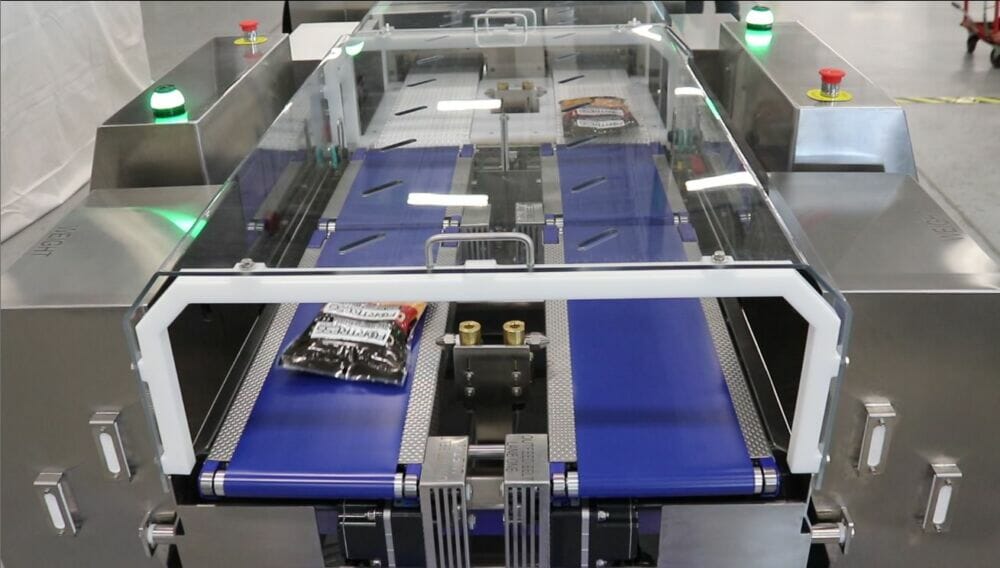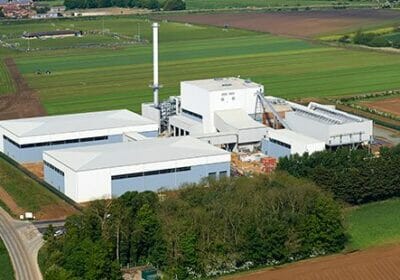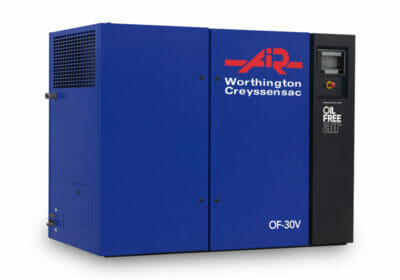In a space-saving product inspection breakthrough, Fortress Technology has custom-engineered a unique twin aperture metal detector and dual lane Raptor checkweigher which delivers unmatchable operational efficiency.
The custom-designed dual lane Raptor Checkweigher is fed by a twin aperture metal detector to provide complete quality control, with the ability to work in unison with a dual head Vertical Form Fill Seal (VFFS) bagging machine and match output speeds of 120-140ppm. The compatible system utilizes a modular plastic chain radius conveyor belt to provide optimal lane spacing for the dual aperture detector and meet end user requirements.
Dual lane conveyer and independent programming
The unique dual-lane version of Fortress Technology’s multi-aperture metal detector comprises a single unit split into two smaller dedicated apertures for each lane that acts as independent metal detectors. Both simultaneously inspecting products, the lanes remain programmed to run independently to help to minimise interruption and provide extra inspection and weight verification capacity.
Air blasting abilities
Using air blast nozzles between the two outfeed conveyors, the Raptor Checkweigher can independently remove contaminated products into lockable, stainless steel reject bins. The air blast devices provide quality control by detecting both metal and weight rejects in each lane, whereby contaminants are blasted outwards to their retrospective bins, equipped with sensors.
Collates critical data
The Raptor’s load cells can weigh, analyse, capture and report data simultaneously to ensure absolute traceability and compliance with retailer Codes of Practice and QA protocols. Both the metal detector and Raptor Checkweigher capture easy-to-read live OEE data and benefit from integrated Contact Reporter software.
In 2021, the Raptor Checkweighing series won the prestigious Food Processing Lean Manufacturing accolade. Commending the synergy between metal detection and weight verification technology, judges hailed the high operational efficiency, cost savings and utilisation of common elements.







